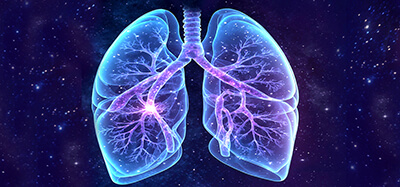
Lung Healing Mantra
Mantras to support health have an ancient history. This simple lung healing mantra helps to create a vibration that connects to your lungs, heart and spirit. Mantras for the lungs often focus on the breath, creating a smooth inhale and exhale to strengthen the lungs and calm the mind.
A Single Word Mantra
This lung healing mantra is a type of sound meditation on a single word: hamsa. The “ham” is the sound of the in breath and the “sa” is the sound of the outbreath. “Hamsa” or “hansa” is also a term of honor, literally meaning “swan.” For example, the name “paramahansa” means the “highest swan.” This is the name given to Paramahansa Yoganada, author of the famous book Autobiography of a Yogi.
Share this page with a friend!
Watch nearly 400 videos on the Vocal Medicine Channel!
Pranayama: The Yoga of Breath
In Hinduism and yogic philosophy, the concept of prana —life force or vital energy— is central. Pranayama, which means “control of prana,” involves a series of breathing techniques used to regulate and direct this life energy.
Breath Regulation
Pranayama is the practice of regulating the in-breath and out-breath as well as holding when the lungs are full (top of the breath) as well as when the lungs are empty (bottom of the breath). Typically, the breath will be counted in specific patterns. The breath may be drawn in and released in equal measure, or in various mathematical patterns for different effects.
Purpose of Pranayama
As a general thing, the breath is extended over time that through repeated practice. Some athletes have used pranayama to increase their cardiovascular conditioning. However, pranayama is more than a physical exercise. Pranayama is a spiritual discipline aimed at purifying the body and mind, preparing the practitioner for deeper meditation and union with the divine.
Breathing Techniques
Techniques like nadi shodhana (alternate nostril breathing), kapalabhati (skull-shining breath), and bhramari (humming bee breath) are not just health practices—they are methods of cultivating inner stillness and clarity. The simple focus on the breath trains the mind to return to a single place in spite of internal and external distractions.
Mastery of Breath
Breath becomes a tool to control the mind, regulate emotion, and open pathways to higher consciousness. In yogic texts like the Hatha Yoga Pradipika and the Bhagavad Gita, the mastery of breath is seen as essential for spiritual liberation (moksha).
Physiology of the Breath
The lungs are vital organs responsible for gas exchange, enabling the body to absorb oxygen and expel carbon dioxide. They are located within the thoracic cavity, protected by the rib cage, and function in tandem with the heart and the respiratory muscles, primarily the diaphragm.
Mechanism of Breath
During inhalation, the diaphragm contracts and moves downward, increasing the volume of the chest cavity and reducing pressure, which draws air into the lungs. Air travels through the nose or mouth, down the trachea, and into the bronchi, which branch into smaller bronchioles ending in alveoli—tiny air sacs surrounded by capillaries. Here, oxygen diffuses into the blood, and carbon dioxide diffuses out, to be exhaled when the diaphragm relaxes.
Control of the Breath
The physiology of breathing is tightly regulated by the brainstem, particularly the medulla oblongata and pons, which respond to carbon dioxide levels in the blood. However, breathing is unique among bodily functions in that it can also be controlled voluntarily. This voluntary control links breath to psychological states and is a foundation for many mind-body practices.
Using a Lung Healing Mantra
Psychologically, breathing is intimately connected to emotions and mental states. Stress, anxiety, and fear often lead to shallow or rapid breathing, while calmness promotes deeper, slower breaths. One of the purposes of a lung healing mantra is to establish a steady rhythm of breathing. This is conducive to harmonization at all levels.
Creating a Positive Mental State
The breath can serve as both a reflection of psychological state and a tool to influence it. Practices like meditation, mantras, yoga, and breathwork leverage conscious control of respiration to calm the nervous system and enhance mindfulness. Slow, deep breathing stimulates the parasympathetic nervous system, reducing heart rate and promoting relaxation.
Bridging the Body and Mind
In essence, the lungs are not only central to physical survival but also deeply tied to mental and emotional well-being. Understanding both the mechanical and psychological dimensions of breath reveals its power as a bridge between body and mind. The use of sound, especially a mantra designed to mimic the process of breathing, is the perfect vehicle for establishing and strengthening this connection.
Author Kathleen Karlsen
Kathleen Karlsen is a musician, artist, writer and speaker. She is the author of two books (Flower Symbols and Vocal Medicine) and over 200 articles. Kathleen, her husband Andrew, and their five children live in Bozeman, Montana. More about Kathleen Karlsen.
Lung Healing Mantra Article Summary
Mantras to support health have an ancient history. This simple lung healing mantra helps to create a vibration that connects to your lungs, heart and spirit. Mantras for the lungs often focus on the breath, creating a smooth inhale and exhale to strengthen the lungs and calm the mind. Explore the physiology and psychology of the breath in this article!
Click for all content on our Site Map
Listen on Spotify!
Click to hear
108x Around the Heart
Click to hear
Vocal Medicine Kirtan







